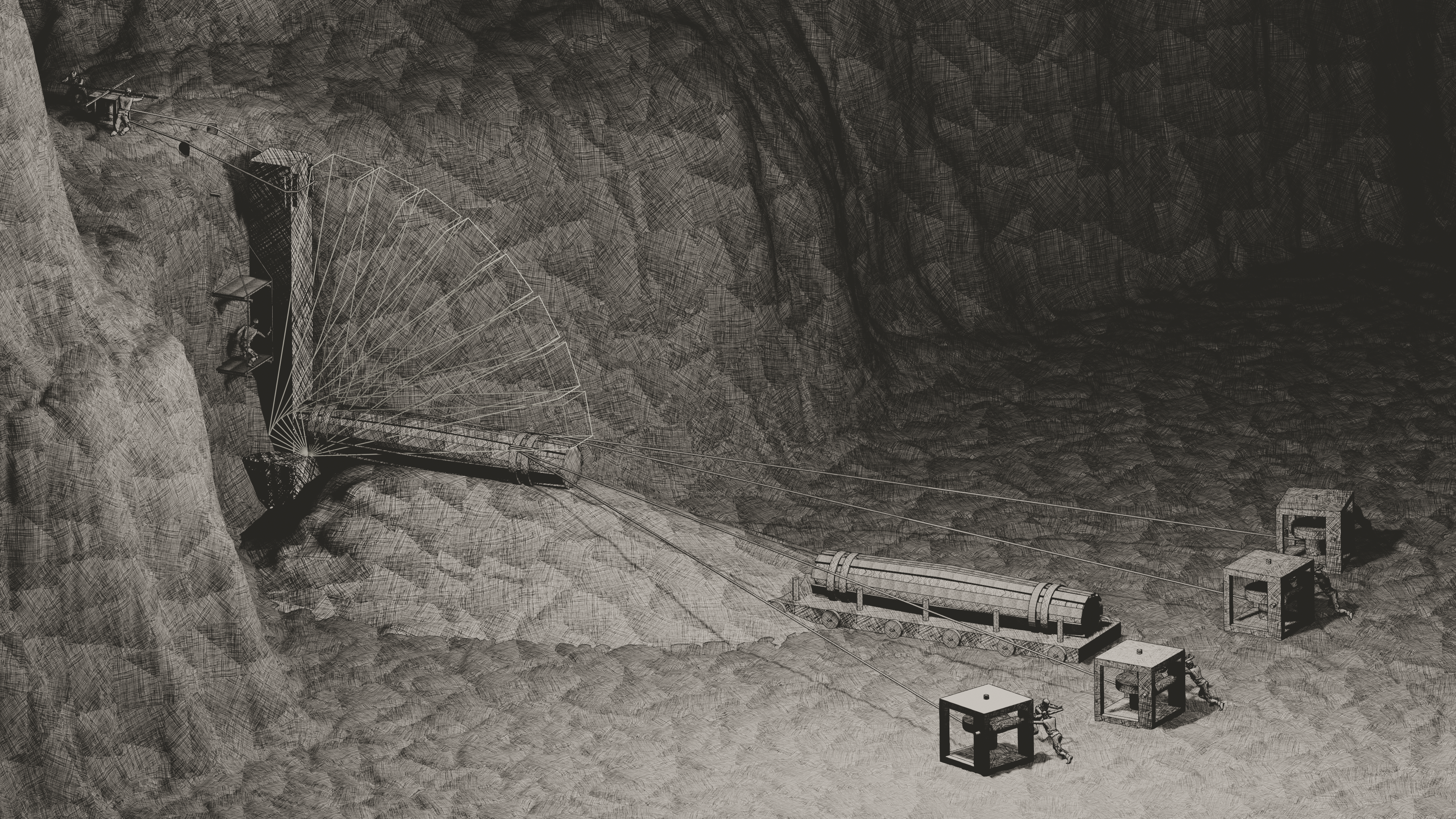Vertical excavated shafts:
Lowering with pile of debris
The high costs associated with transporting columns during the Renaissance necessitated extreme caution. Architects and engineers aimed to prevent fractures and delays, making the quarry phase crucial. Safety measures were implemented to control the descent of stone blocks, including a system using a pile of debris as an impact matrass to slow the fall. This practice had historical precedent, as seen in descriptions by Hero of Alexandria. The second safety mechanism involved winches above the column. After the initial descent, winches ensured controlled lowering. Additionally, wooden blocks protected ropes from wear, and a wooden framework wrapped the column for added protection. The column was roughly shaped and prepared for transport at the quarry, and which allowed a stone protection layer which remained during the transportation.

To transition the column onto a cart or sledge, winches in front of the cart pulled it onto the vehicle, avoiding the need to lift the column separately. This way the column slides along the slopes of the pile of debris onto the cart. The choice of winch and configuration were crucial for efficient coordination. Once attached to a team of oxen, the column began its journey to the building site.
Animation
The animation attempts to demonstrate the process by which a heap of debris is
employed to gradually lower a vertically excavated column into its horizontal position.